EN Summary: This model looks simple and it's fairly easy to sew, yet it will deliver quite an exquisite and elegant dress if the knit fabric is chosen wisely. To find out more about it, keep reading the full article on tanysewsandknits.blogspot.com.
---
PT Sumário: Este modelo parece simples e é bastante fácil de confecionar, no entanto produz um vestido bastante requintado se souberem escolher o tecido de malha mais favorecedor. Para saberem mais acerca deste projeto, leiam o artigo completo em tanysewsandknits.blogspot.com.
EN: I have one confession to make: when I first browsed through the November issue of BurdaStyle magazine, this dress flew completely under my radar; it was probably because of the fabric used, which is referred as "fine knit fabric with elastane" - it looked to me as some sort of thin jersey which doesn't provide any structure to the dress.
---
PT: Devo confessar que nas primeiras vezes que folheei a revista BurdaStyle de Novembro este vestido me passou completamente ao lado; creio que foi pelo tecido que usaram, referido como "malha fina com elastano" e que me parece algo como jersey, não dando qualquer corpo ao vestido.
image credits: burdastyle.com
EN: Later, when I noticed the line drawing, I understood the pattern's true potential and felt completely hooked. By the way, there's no need to buy the magazine issue if you're interested in this pattern; there's also the possibility of purchasing the pdf pattern on burdastyle.com (click here).
The dress description reads: "Funnel neckline, drop shoulders, ties; this dress is very easy and extremely comfortable to wear, yet has an elegant look." - there's no reference to the sleeve design, which IMO is a mix of inset sleeve with short cap sleeve.
Sizing: Burda sizes 36, 38, 40, 42, 44 Back length about 118 cm (46 1/2 ins) - I traced size 40.
Recommended fabrics: Fine knit fabric. Medium to heavy weight jersey fabrics. Use stretch fabrics only.
Here's my personal recommendation: use a knit fabric with some body/weight; the main design features will be highlighted (the collar and the shoulder/sleeve shape). I used beige stable knit (medium weight and moderate stretch) and I really loved the end result.
---
PT: Mais tarde, quando reparei no esquemático, é que me apercebi do verdadeiro potencial deste vestido, ficando rendida. Já agora, se não quiserem ou puderem comprar a revista, saibam que já podem comprar o molde em pdf no site Português burdastyle.pt (clicar aqui).
A descrição do vestido é: "Gola alta, ombros largos e cinto: O vestido de malha é super-fácil de trabalhar e extremamente confortável de usar, no entanto faz um look perfeito." - Eu diria gola subida, ombros caídos com encaixe de manga estilo japonês e cinto, mas é apenas uma questão de semântica.
Tamanhos: 36, 38, 40, 42, 44, comprimento das costas cerca de 118cm. Cortei o tamanho 40
Tecidos: malha fina. Tecidos de jersey de peso médio a pesado. Utilizar apenas tecidos extensíveis.
A minha recomendação pessoal: usem tecidos de malha estável com peso médio e que mantenham a forma, para evidenciarem as características fortes do vestido: decote e mangas. Eu usei uma malha estável bege (tipo sweater) com alguma elasticidade e resultou muito bem.
EN: I have to take a moment and talk about the sleeve design because it is one of the features which sets this model apart. Most drop sleeve designs implicate a wide sleeve and a low armhole but it is not the case with this dress: in fact the sleeves are narrow (not close fitting, but narrow enough), thanks to maintaining some sort of armhole round base, if this makes any sense. It reminds me of some vintage dress designs from the late 60s.
---
PT: Tenho de falar mais em detalhe do design das mangas deste modelo, pois é uma das características que o distingue, na minha opinião. Normalmente quando temos um modelo com ombros caídos isso implica uma cava descida e mangas largas, mas tal não é o caso com este vestido: de facto as mangas até são bastante estreitas (sem serem justas) e isso é conseguido graças à base da cava que mantém o desenho de uma manga metida normal. Esta forma diferente de manga lembra-me alguns modelos de vestido dos finais dos anos 60.
EN: The heavier less drape knit holds the shape of the collar better and enhances the roundness of the shoulders towards the sleeves, elevating the dress in elegance and making it look expensive (at least in my opinion).
---
PT: A malha mais pesada e encorpada mantém a forma do decote subido e evidencia a curva dos ombros caídos, elevando o modelo em termos de elegância, dando-lhe uma aparência mais cara (pelo menos na minha opinião).
EN: The hemming was made with the coverstitch machine; I used 2" (5cm) wide hem allowances. I finished all seam allowances with a 3-thread overlock and straight stitched all the seams. This is specially necessary on the center back seam: it must be pressed open due to the back neckline invisible zipper closure, and also when setting in the sleeves (there are two pivot points that must be stay-stitched and clipped to be able to form perfect corners at the armhole's base).
NOTE: the following photo, taken with natural light, shows the quality and the texture of the knit fabric better.
---
PT: As bainhas foram cosidas com a
máquina recobridora (galoneira no Brasil); usei margens de bainha largas (5cm). As margens das costuras foram acabadas com a corta-e-cose e as costuras cosidas com a máquina industrial reta. Temos de usar o ponto reto (ponto normal das máquinas de costura) porque nas costas a costura tem de ser assente aberta (leva um fecho invisível no decote atrás) e também pelos ângulos formados na base das mangas. No corpo do vestido estes ângulos devem ser reforçados com um pesponto ligeiramente dentro da margem e golpeados, para conseguir ângulos perfeitos na união das mangas com a cava.
NOTA: A foto seguinte, tirada com luz natural, evidencia melhor a qualidade e a textura da malha que usei.
EN: Here's the dress seen from the back where the only alteration to the original model was made: a walking ease vent.
---
PT: Aqui têm a vista das costas do vestido onde é evidente a única alteração que fiz ao modelo original: uma abertura para facilitar o andar.
EN: To add a vent all it takes is marking its length and adding a vent extension of 2" (5cm) to the back pattern, to be cut both on the left and right back (I also interfaced these extensions). I made a separate pattern piece copying just the vent extension - this pattern will be used to cut a vent facing for the vent underlap (right back side) - note that this facing should be interfaced as well.
The following photo shows the left side of the vent (overlap) where I made a mitered corner with the extension and the hem (both 2" wide):
---
PT: Para acrescentar a abertura basta marcá-la no molde das costas e acrescentar uma extensão de 5cm na abertura até à bainha. As costas (esquerda e direita) devem ser cortadas com esta extensão, na qual se aplica entretela termo-colante. Fiz também um molde separado igual à extensão apenas, usado para cortar a vista da extensão que fica por baixo (parte direita das costas). Esta vista deve também levar entretela.
A foto seguinte mostra a parte esquerda da abertura, onde formei um canto mitrado com a extensão e bainha (ambas com largura de 5cm):
EN: On the right side, the underlap takes the facing sewn to the edge of the extension along the vent and at the hemline; the seam is under-stitched along the vent's length.
---
PT: O lado direito (parte que fica por baixo da abertura) leva a vista por dentro, cosida ao longo do comprimento da extensão e ao nível da bainha; a costura ao longo da extensão tem um pesponto de girar.
EN: Finally here's the neckline's invisible zipper on the back; don't forget to interface the seam allowances to prevent a rippled zipper (it often happens with knits and stretch fabrics, if the seam allowances are not interfaced).
---
PT: Finalmente aqui têm o fecho invisível no decote atrás; não se esqueçam de entretelar as margens de aplicação para não terem aquele efeito ondulado no fecho (acontece especialmente em malhas e tecidos extensíveis, se não forem entretelados nas margens de aplicação dos fechos).
CONCLUSION: I highly recommend this pattern; it has a certain understated elegance that suits most women. The high neckline, the sleeve design, the straight lines, the self-fabric cord belt, these are all features elevating a simple knit tube dress into an elegant staple of any wardrobe.
I am planning to style it with a camel brown faux fur vest and chunky beige booties; do you guys like my idea? How would you style it instead?
Thank you all for reading!
---
CONCLUSÃO: Recomendo vivamente este molde; tem uma certa elegância discreta que irá favorecer a maioria das mulheres. A gola subida, o design das mangas, as linhas direitas, o cinto/cordão feito do mesmo tecido, são tudo características que elevam um simples vestido-tubo de malha a uma peça-chave de qualquer guarda-roupa.
O meu plano para já é usar este vestido com um colete de pelo camel e botins "chunky" da mesma cor do vestido; o que acham da ideia? Como combinariam este vestido?
Obrigada a todos pela visita!
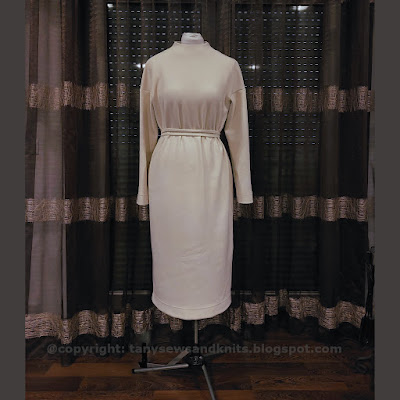

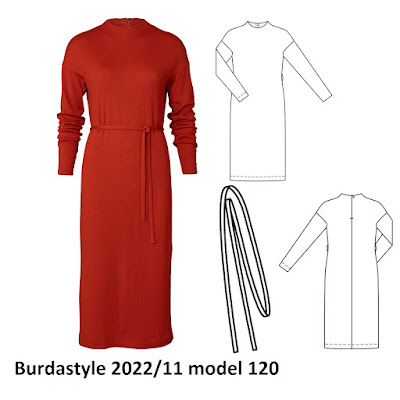


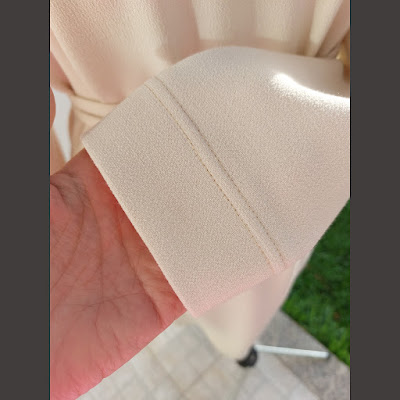


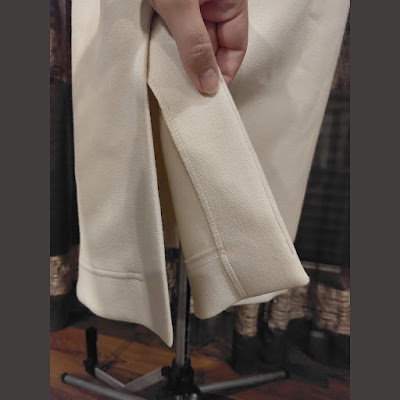

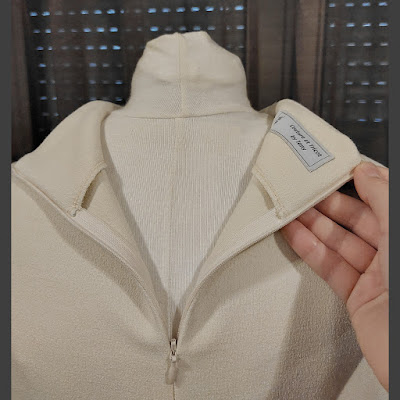






3 comments:
You'll look super smart!!
Hi! I'm so glad you shared your tips about this dress! I just bought a nice medium weight wool knit and then remembered your post about this dress. So this is what I'll be making, adding the vent as you suggested. A big thank you!Julie
You're welcome, Julie! I'm very happy to know my article was useful!
Post a Comment